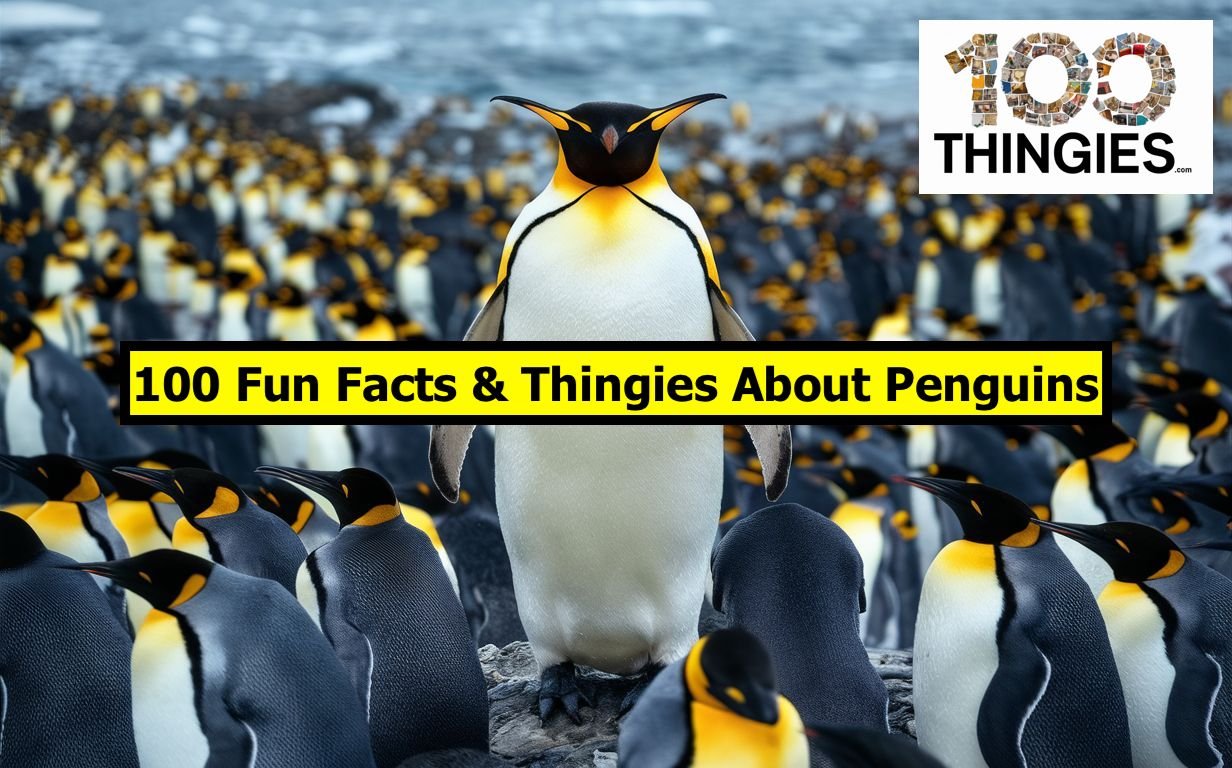Insects, those tiny creatures that buzz, crawl, and flutter around us, are among the most fascinating and diverse groups of animals on our planet. Here’s a collection of 100 interesting facts about insects designed to intrigue readers of all ages, from curious preteens to seasoned professionals.

1. Insects Are Everywhere
Insects inhabit every continent, including Antarctica, where the wingless midge thrives.
2. They’re Ancient Creatures
The earliest insects date back to about 400 million years ago, making them one of the oldest groups of organisms on Earth.
3. A World Dominated by Insects
There are over 1 million described and recorded species of insects, and scientists estimate there could be as many as 10 million, making them the most diverse group of organisms.
4. Insects Outnumber Humans
For every human on Earth, there are an estimated 200 million insects.
5. The Smallest Insect

The smallest known insect is the fairyfly, some species of which are only 0.139 mm in length.
6. And the Largest…

The largest insect ever recorded was a prehistoric dragonfly, the size of an eagle, with a wingspan of about 2.5 feet (75 cm). Yep, I’m glad I wasn’t around back then seeing as I have the fear of dragonflies!
7. Insects Are Pollination Pros
About 75% of the flowering plants on Earth rely on insects for pollination, including many of our food crops.
8. Insects’ Three-Part Bodies
An insect’s body is divided into three parts (Hopefully, you didn’t skip Natural science class back in the day): these body parts are the head, thorax, and abdomen.
9. Their Eyes Are Complex

Many insects have compound eyes, which consist of thousands of individual lenses, giving them a wide field of vision.
10. Insects Breathe Through Their Sides
Instead of lungs, insects breathe through a series of tubes called tracheae that open to the outside through small holes in their sides.
11. The Fastest Insect
The Australian tiger beetle is considered the fastest insect, capable of running at speeds up to 5.6 mph (9 km/h).
12. Insects’ Exoskeletons
An insect’s skeleton is on the outside (exoskeleton), providing support and protection but requiring them to molt to grow.
13. The Light Producers
Fireflies produce light through a chemical reaction in their abdomens in a process known as bioluminescence.
14. Insect Communication
Insects communicate in various ways, including through sounds, pheromones, and even visual signals.
15. Ants Are Super Strong
Ants can carry objects 50 times their own body weight thanks to their strong exoskeletons.
16. The Beneficial Insects
Many insects, such as ladybugs and lacewings, are beneficial to humans by controlling pest populations.
17. Honeybees’ Waggle Dance
Honeybees perform a “waggle dance” to communicate the direction and distance of food sources to their hive mates.
18. Insects Have Been to Space
Fruit flies were the first living creatures sent into space in 1947 to study radiation exposure at high altitudes. Yeah, don’t ask me why; that doesn’t make sense to me either!
19. Insects and Silk Production
Silkworm moths are cultivated for silk production, with each cocoon producing about 1,000 yards of silk filament.
20. The Metamorphosis Miracle
Many insects undergo metamorphosis, dramatically changing their form from a larva to an adult.
21. The World’s Deadliest Animal
Mosquitoes are considered the world’s deadliest animals to humans, spreading diseases like malaria, dengue fever, and Zika virus. If only there was a way to decrease the amount of mosquitos in the world?
22. Insects’ Role in Forensics
Forensic entomologists study insects on decomposing remains to help determine the time of death in criminal investigations.
23. Butterflies Taste With Their Feet
Butterflies have taste receptors located on their feet, which allows them to taste their food by standing on it.
24. Insects in Medicine
Certain insects, such as maggots and leeches, are used in modern medicine to clean wounds and restore blood circulation.
25. The Longest Migration

The monarch butterfly undertakes a massive migration, traveling thousands of miles from North America to central Mexico for the winter.
26. Insects as Food
In many cultures, insects are widely considered a delicacy and an important source of protein.
27. Crickets’ Temperature Telling
You can tell the current external temperature by counting the number of chirps a single cricket makes in 15 seconds and adding the number 37. It’s time to check the chirperature!
28. The Protective Coloration
Many insects use camouflage and mimicry to protect themselves from predators, blending into their surroundings or imitating more dangerous species.
29. Insects in Art and Literature
Insects have inspired countless works of art and literature, symbolizing transformation, resilience, and the beauty of the natural world.
30. Insects and Ecosystem Health
Insects play a critical role in ecosystems, acting as pollinators, decomposers, and a food source for other animals, indicating the health of their environments.
31. Cicadas’ Long Underground Life
Some cicada species spend up to 17 years living underground as nymphs before emerging to mate, making them the longest-living insects in terms of juvenile development.
32. Beetles Are Incredibly Diverse
Beetles are the most diverse group of insects, with over 350,000 known species, constituting about 40% of all insect species.
33. Ants Farm Aphids

Some ant species “farm” aphids, protecting them from predators and milking them for honeydew, a sweet substance aphids produce.
34. Dragonflies Are Efficient Predators
Dragonflies catch up to 95% of their prey, making them some of the most efficient and skilled hunters with the highest kill rate in the animal kingdom.
35. The Termite Queens’ Long Reign
Termite queens can live for up to 50 years, laying thousands of eggs each day and reigning over colonies that can number in the millions.
36. Insects’ Impact on Agriculture
Insects affect agriculture both positively, as pollinators, and negatively, as pests that can cause billions of dollars in crop damage annually.
37. The Protective Armor of Beetles
The hard shell of a beetle, known as the elytra, protects its wings and body, serving as armor against predators and environmental hazards.
38. Insects’ Role in Breaking Down Waste
Insects like dung beetles and carrion beetles play a crucial role in decomposing waste, recycling nutrients back into the ecosystem.
39. Locust Swarms Can Be Vast
Locust swarms can cover hundreds of square miles and consume as much food in one day as 10 million people, leading to devastating agricultural losses.
40. The Symbiotic Relationships
Many insects engage in symbiotic relationships with plants, fungi, and other animals, contributing to biodiversity and ecosystem stability.
41. Butterflies Remember Being Caterpillars
Studies suggest that butterflies can retain memories from their time as caterpillars, despite undergoing metamorphosis.
42. Insects Have Inspired Robotics

The design and mechanics of insects have inspired advancements in robotics, leading to the creation of more efficient, versatile machines.
43. Insects and Climate Change
Insects are both affected by and play a role in climate change, with changes in insect populations and distributions having wide-reaching effects on ecosystems.
44. Praying Mantises Can Turn Their Heads
Praying mantises are among the few insects that can turn their heads, allowing them to scan their surroundings for prey and predators.
45. The Versatility of Ant Colonies
Ant colonies can adapt to almost any environment, from rainforests to deserts, showcasing their incredible resilience and social organization.
46. Flies Are More Than Pests
While often considered pests, flies play important roles in pollination, waste decomposition, and serving as a food source for many other species.
47. The Vibrant Colors of Insects
The vibrant colors of many insects are not just for show; they serve as camouflage, warning signals to predators, or attractants for mates.
48. Spiders Are Not Insects
Despite common belief, spiders are not insects but belong to the arachnid family, which also includes scorpions, ticks, and mites.
49. Some Insects Can “Hear” With Their Body
Insects like moths and butterflies can detect sound vibrations through their wings or body hairs, helping them evade predators like bats.
50. Insects’ Nighttime Activities
Many insects are nocturnal, using the cover of darkness to avoid predators and exploit different ecological niches.
51. The Economic Value of Insects
The economic value of insect pollination services for agriculture is estimated in the billions, highlighting their critical role in food production.
52. The Complexity of Insect Societies
Insect societies, such as those of ants, bees, and termites, exhibit complex social behaviors, including division of labor, collective decision-making, and sophisticated communication systems.
53. Some Insects Use Tools

Certain insects, like the wasps that use stones to compact their nests, exhibit tool use, a behavior once thought to be unique to higher animals.
54. Insects’ Sensitivity to Environmental Changes
Insects are highly sensitive to slight environmental changes, which makes them valuable indicators for monitoring ecosystem health and the effects of pollution and climate change.
55. The Speed of Insect Reproduction
Insects can reproduce rapidly, with some species capable of producing multiple generations within a single season, leading to quick population growth.
56. Insects in Space Exploration
Insects have been part of space exploration studies to understand the effects of zero gravity on living organisms, contributing to our knowledge of life in space.
57. Insects and Human Culture
Insects have been part of human culture for millennia, revered as symbols of change and renewal in art, literature, and religion.
58. The Disappearance of Insects
Recent studies have raised concerns about a global decline in insect populations, known as the insect apocalypse, which could have severe implications for ecosystems and human societies.
59. Insects and Biodiversity
Insects contribute significantly to biodiversity, with their vast numbers and variety supporting complex food webs and ecological processes.
60. Insect Conservation Efforts
Conservation efforts for insects focus on habitat protection, reducing pesticide use, and raising awareness of their ecological importance, aiming to preserve these vital creatures for future generations.
61. Insects Can Regrow Lost Limbs
Some insects, particularly in their nymph or larval stages, can regrow lost limbs, showcasing their remarkable resilience and capacity for regeneration.
62. The Phenomenon of Insect Swarming

Swarming, a behavior seen in species like bees and locusts, is a fascinating phenomenon where insects gather in massive numbers for migration, breeding, or finding new resources.
63. Insects Use Chemical Warfare
Many insects produce chemicals for defense, like the bombardier beetle, which sprays boiling chemicals to deter predators, showcasing a unique form of chemical warfare.
64. The Architectural Wonders of Insects
Insects like termites and ants build complex structures, including mounds and nests, that regulate temperature, humidity, and even airflow, demonstrating remarkable architectural and engineering skills.
65. Insect Vision and UV Light
Many insects, including bees, can see ultraviolet light, which aids them in finding flowers and navigating through the environment by detecting patterns invisible to the human eye.
66. Insects in Traditional Medicines
Across various cultures, insects have been used in traditional medicine practices for centuries, providing treatments for ailments ranging from infections to wounds.
67. The Role of Insects in Soil Health
Insects play a crucial role in maintaining soil health by decomposing organic matter, aerating the soil, and facilitating nutrient cycling, underpinning the health of entire ecosystems.
68. Insects and Water Quality Monitoring
Certain insects, particularly those in aquatic larval stages, are used as bioindicators for monitoring water quality, as their presence or absence can indicate the health of aquatic ecosystems.
69. Mimicry in the Insect World

Mimicry, where insects resemble other more dangerous or unpalatable species, is a survival strategy that helps them avoid predation, illustrating the complexity of evolutionary adaptations.
70. Insects’ Role in Waste Management
Insects, especially fly larvae, play a significant role in waste management. They do this by breaking down any organic waste they come in contact with, offering potential solutions for composting and reducing landfill use.
71. The Diversity of Insect Diets
Insects exhibit a wide range of dietary preferences, from strict herbivores and carnivores to omnivores and detritivores, reflecting their adaptability to different ecological niches.
72. Insects’ Impact on Human History
Insects have impacted human history in significant ways, from the spread of diseases that altered populations and societies to the cultivation of crops dependent on insect pollination.
73. Collecting Insects as a Hobby
Insect collecting has been a popular hobby for centuries, contributing to the study of entomology and the discovery of new species, while also fostering a deeper appreciation for these creatures.
74. Insects in Art and Symbolism
Insects have been depicted in art and symbols throughout history, representing themes of transformation, rebirth, and immortality, particularly in the case of the butterfly.
75. Photoperiodism in Insects
Many insects use photoperiodism, the response to the length of day or night, to time their development stages, migrations, and reproductive cycles, closely tying their life cycles to seasonal changes.
76. Insect Cooperation and Altruism
Insect societies, especially those of ants, bees, and termites, exhibit behaviors that can be considered altruistic, where individuals work for the benefit of the colony rather than for personal gain.
77. Insects in the Food Chain
Insects are a critical link in many food chains, serving as a primary food source for a variety of animals, including birds, fish, and mammals, and indirectly supporting higher trophic levels.
78. The Nocturnal Life of Insects
Many insects are nocturnal, active at night to avoid predators and exploit resources with less competition, revealing a different, often unseen world of insect activity.
79. Insects and Natural Pest Control
Did you know that Insects play a vital role in the earth’s natural pest control, with predatory and parasitic species managing the populations of pest insects, highlighting the importance of conserving insect biodiversity for sustainable agriculture.
80. Insects’ Survival Strategies
Insects employ a range of survival strategies, including diapause which is described as a state of suspended development. They do this in order to survive unfavorable conditions, showcasing their incredible versatility and resilience.
81. The Use of Insects in Research
Insects are used extensively in scientific research as model organisms, providing insights into genetics, development, disease, and more, due to their relatively simple structures and short life cycles.
82. The Global Trade of Insects
There is a global trade in insects for various purposes, including as pets, for scientific research, and in the case of silkworms and honeybees, for commercial production of silk and honey.
83. Insects and Ecosystem Services
Insects provide essential ecosystem services, including pollination, decomposition, and soil aeration, which are critical for the production of food, maintenance of habitats, and overall biodiversity.
84. Climate Change and Insect Populations
Climate change impacts insect populations and distributions, with some species expanding into new areas while others decline, potentially disrupting ecological balances and human agriculture.
85. Insects as Indicators of Habitat Quality
The presence or absence of certain insect species can indicate the quality of habitats, with sensitive species serving as early warning systems for environmental degradation.
86. The Soundscapes of Insects
Insects contribute to the soundscapes of natural environments, with the buzzing of bees, chirping of crickets, and singing of cicadas adding to the auditory experience of ecosystems.
87. Insects in Education

Insects are valuable tools for education, providing accessible and engaging ways to teach about biology, ecology, and conservation, sparking curiosity and respect for nature in students of all ages.
88. The Challenge of Insect Conservation
Insect conservation faces challenges from habitat loss, pesticide use, climate change, and pollution, requiring targeted efforts to protect these vital creatures and the roles they play in ecosystems.
89. The Beauty of Insects
The beauty of insects, from the intricate patterns of butterfly wings to the iridescent shimmer of a beetle’s shell, inspires admiration and wonder, reminding us of nature’s artistry.
90. Insects and Sustainable Farming
Insects are integral to sustainable farming practices, providing natural pest control and pollination services that reduce the need for chemical inputs and support biodiversity on farms.
91. The Cultural Practices Involving Insects
Cultural practices involving insects, from silk production in Asia to the consumption of insects as food in many parts of the world, demonstrate the diverse ways humans interact with these creatures.
92. Insects and Urban Ecology
Insects play important roles in urban ecology, pollinating plants, decomposing waste, and supporting urban biodiversity, highlighting the need for green spaces and natural habitats in cities.
93. The Complexity of Insect Behavior
Insect behavior, from complex navigation and communication to social organization and cooperation, continues to fascinate scientists, revealing the cognitive capabilities of these small creatures.
94. The Aesthetic Appreciation of Insects
The aesthetic appreciation of insects, whether through photography, nature observation, or art, fosters a connection to the natural world and an understanding of the importance of conserving biodiversity.
95. Insects and Human Health
Insects play roles in human health, both as vectors of diseases and as sources of compounds for medical research and treatments, illustrating the dual impact of insects on human societies.
96. The Future of Insects and Biodiversity
The future of insects and biodiversity hinges on our actions today, with conservation, sustainable practices, and ecological restoration efforts being key to preserving insect populations and the vital services they provide.
97. The Role of Citizen Science in Insect Studies
Citizen science projects involving insects, such as butterfly counts and bee monitoring, engage the public in scientific research, contributing valuable data and fostering a sense of stewardship for the environment.
98. Insects in Biotechnology
Insects are used in biotechnology, from the production of silk and dyes to the development of new materials inspired by insect biology, showcasing their potential in innovative applications.
99. The Ethical Considerations of Insect Use
Ethical considerations regarding the use of insects in research, food production, and as pets are increasingly discussed, reflecting changing attitudes towards these creatures and their welfare.
100. The Enduring Fascination with Insects
The enduring fascination with insects, driven by their diversity, complexity, and the mysteries they hold, continues to inspire exploration, discovery, and a deeper appreciation for the smallest inhabitants of our planet.








